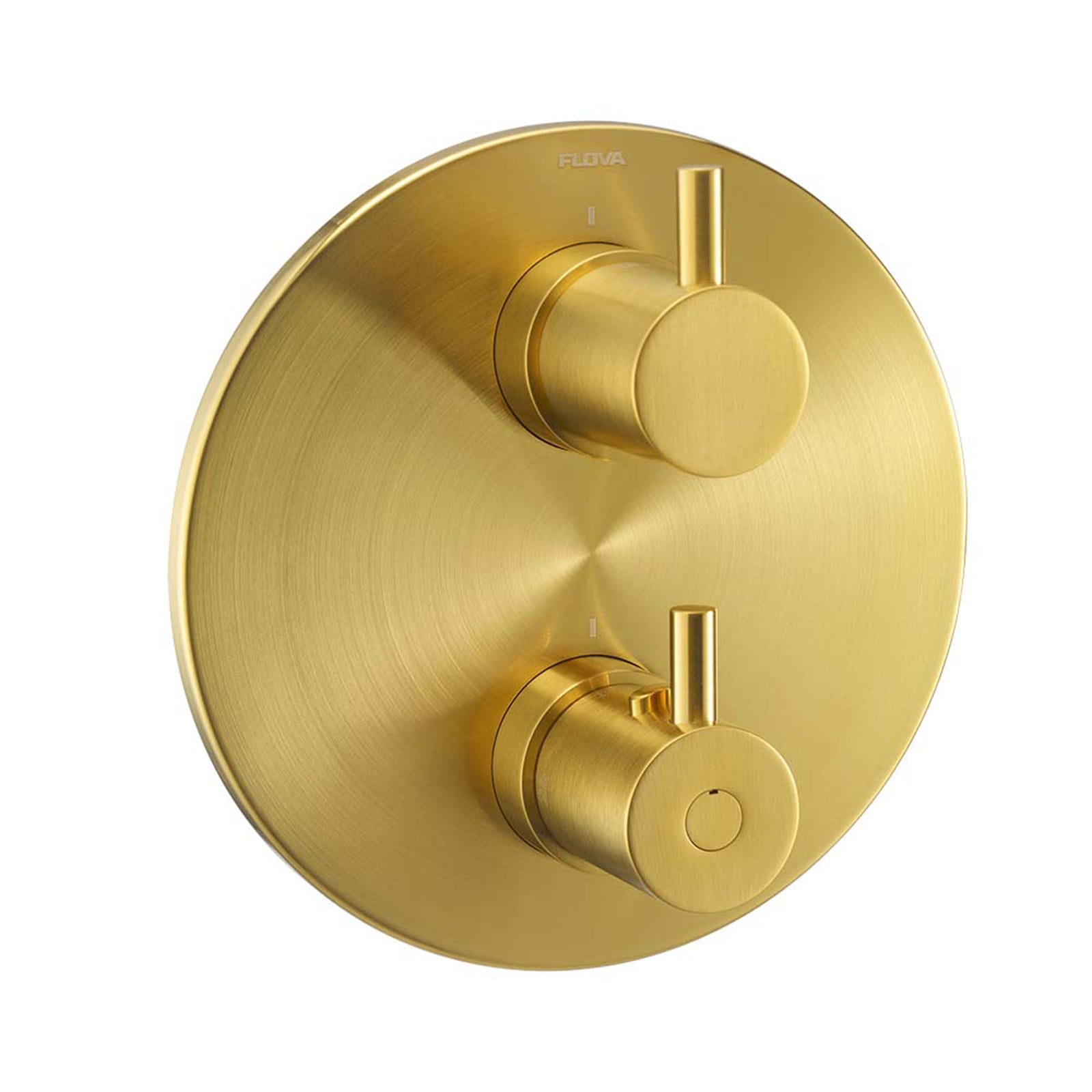When it comes to choosing a thermostatic shower valve, one of the first decisions to make is whether to go for a concealed or exposed installation. While both options provide the same core benefit—stable, controlled water temperature—the way they’re fitted and function within a bathroom setup can vary significantly.
In this guide, we break down the key differences between a concealed thermostatic valve and an exposed one, focusing on installation complexity, long-term maintenance, and practical use. Whether you're a bathroom installer advising clients, or a professional plumber managing a high-spec fit-out, this side-by-side comparison will help you recommend the right system for the job.
What’s the Difference?
Exposed Thermostatic Valves
An exposed thermostatic valve is mounted on the outside of the wall, with pipework and controls visible. It’s typically quicker to install and ideal for retrofit projects or when access behind the wall is limited.
Concealed Thermostatic Valves
A concealed thermostatic valve, on the other hand, is built into the wall, leaving only the control plate and handles visible. The functional components—including the valve body and pipework—are hidden behind the tiles or wallboard, creating a sleek, minimalist finish.
While both deliver precise water temperature regulation, the difference lies in how—and where—they’re installed.
Concealed vs Exposed Shower Valve: Side-by-Side Comparison
To help you compare the two, let’s examine the pros and cons of each across several key categories that matter to tradespeople and end users alike.
1. Installation Time and Complexity
-
Exposed Valves
Exposed units are often preferred for speed and simplicity. With no need to recess the valve into the wall, the job is less invasive and better suited to retrofits or surface-mount plumbing setups. They’re a go-to for clients looking for a cost-effective upgrade. -
Concealed Valves
Installing a concealed unit typically involves chasing out the wall, adjusting pipework, and ensuring the depth matches tile or wall thickness. It’s a more involved process—better suited to full bathroom refurbishments or new builds where wall access is straightforward.
2. Maintenance and Servicing
-
Exposed Valves
With the valve body fully visible, maintenance is simple. Access to cartridges, filters, and seals can be done without disturbing any tiling or wall structure, which makes long-term servicing much easier. -
Concealed Valves
Access is usually via a removable faceplate, but internal repairs may require removing tiles or cutting into the wall—especially if something goes wrong behind the unit. This can mean extra labour time and disruption.
3. Space and Layout Considerations
-
Exposed Valves
Exposed valves protrude from the wall, which can reduce available space in smaller shower enclosures. However, this isn’t always a major issue, especially in more spacious layouts or utility-style bathrooms. -
Concealed Valves
By recessing the unit into the wall, concealed valves offer a cleaner profile and maximise available space in tight areas. This can make a noticeable difference in compact en-suites or bathrooms with limited square footage.
4. Client Preferences and Aesthetics
-
Exposed Valves
While appearance wasn’t the focus of this article, it’s worth noting that exposed valves still have their place. Some clients prefer the industrial or traditional look of visible pipework, especially in older properties or utility settings. -
Concealed Valves
For clients who want a modern, streamlined aesthetic, concealed valves are often the top choice. They help maintain clean wall lines and reduce visual clutter, which is particularly popular in contemporary bathroom designs.
5. Project Scenarios and Best Fit
-
Exposed Thermostatic Valves Are Ideal For:
-
Rental properties
-
Budget-conscious renovations
-
Quick retrofits or replacements
-
Utility rooms and secondary bathrooms
-
Concealed Thermostatic Valves Are Ideal For:
-
New builds or full renovations
-
Space-saving installations
-
High-end domestic bathrooms
-
Projects with access to wall cavities
Installer Insights: What to Ask the Client
When guiding clients toward the right system, consider asking the following:
-
What’s the budget?
Concealed setups often cost more in labour and materials. -
Is this a new install or a retrofit?
Exposed units are usually quicker for replacements. -
How important is a minimalist look?
Concealed options are better for sleek design. -
Will future maintenance be easy?
If tiling access is limited, exposed may be more practical.
Ultimately, it’s about balancing practical considerations with the end-user’s needs and expectations. Some clients are happy to pay more for a concealed system if it means a cleaner finish, while others just want something reliable, accessible, and easy to maintain.
Product Fit: Choosing the Right Valve Style
At Allbits, we stock a wide selection of concealed thermostatic shower valves and exposed options for a variety of project requirements. Whether you're working on a commercial contract or a single home renovation, our trade-ready stock is built to meet installer demands.
-
Planning a minimalist upgrade? Browse thermostatic valve styles for recessed solutions.
-
Need a reliable unit for a quick replacement? Check our exposed or concealed shower systems to compare performance and access features.
Our thermostatic valve range includes models from trusted brands, all tested for long-term durability, with spare parts readily available.

